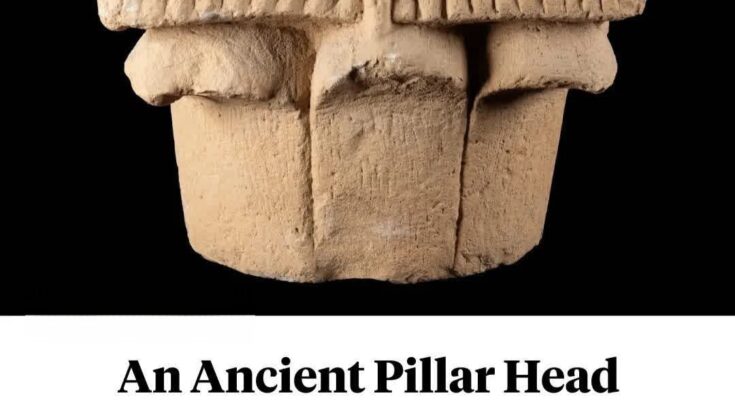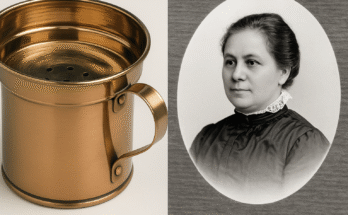Discovered lying upside down amid the ruins of a 6th- or 7th-century C.E. Byzantine structure, the pillar head was likely repurposed as building material during that period.
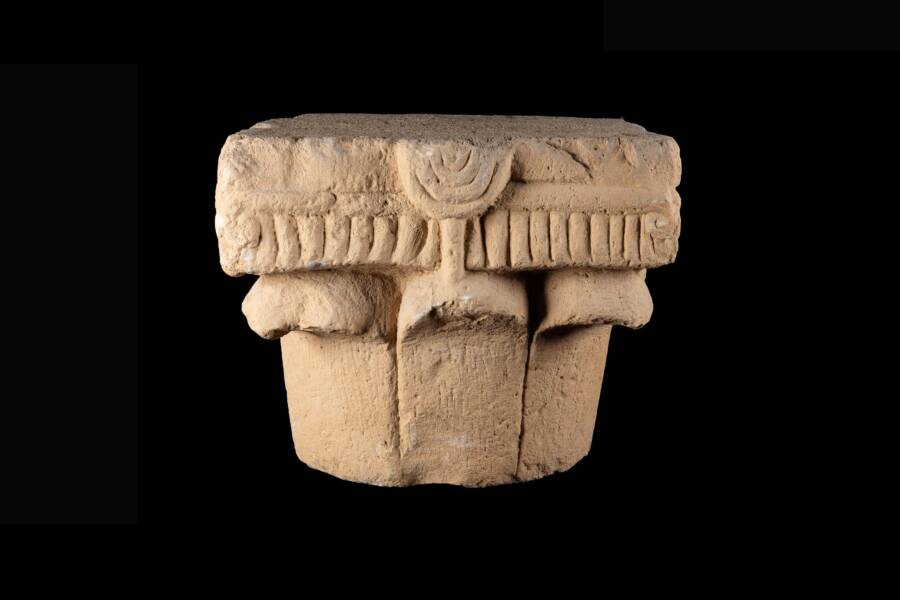
Israel Antiquities Authority/FacebookUnlike anything unearthed before, this ancient pillar head has no “archaeological parallels,” according to the Israel Antiquities Authority.
During excavations on the outskirts of Jerusalem in 2020, archaeologists were surprised to find a stone capital — the top of a pillar or column — that seemed to be adorned with an image of a menorah. Archaeologists suspect that this pillar head was originally constructed at a Roman settlement at least 1,500 years ago, though it’s possible that it was created even earlier at a Jewish settlement that was later destroyed.
For now, many questions remain about this unique artifact, though archaeologists have some fascinating theories. In the meantime, experts are celebrating this ancient pillar head as a “rare” and “unparalleled” find.
The Discovery Of An Ancient Pillar Head That May Depict A Menorah In Jerusalem
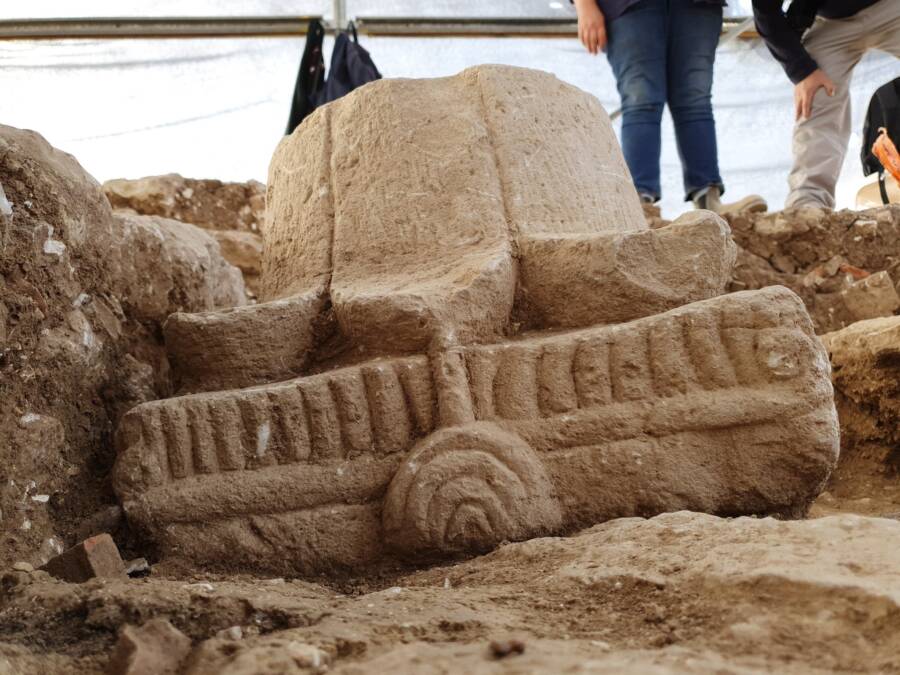
Israel Antiquities Authority/FacebookThe stone capital as it was found in the field in 2020.
According to a Facebook post from the Israel Antiquities Authority (IAA), the limestone capital—believed to depict a menorah—was first discovered in 2020 during excavations carried out ahead of the construction of a new entrance to Jerusalem. It was found resting upside down within a Byzantine-era building dating to the 6th or 7th century C.E., shortly after the fall of Rome. Archaeologists believe the capital was not originally part of the Byzantine structure but was instead repurposed from an earlier site—most likely an ancient Roman settlement.
The upper section of the capital is adorned on each side with an eight-branched candelabrum, while the lower section features eight stylized leaves on each face.
Yet this raises a compelling question: if the capital does indeed depict a menorah, what was such a symbol doing in the heart of a Roman-era settlement?
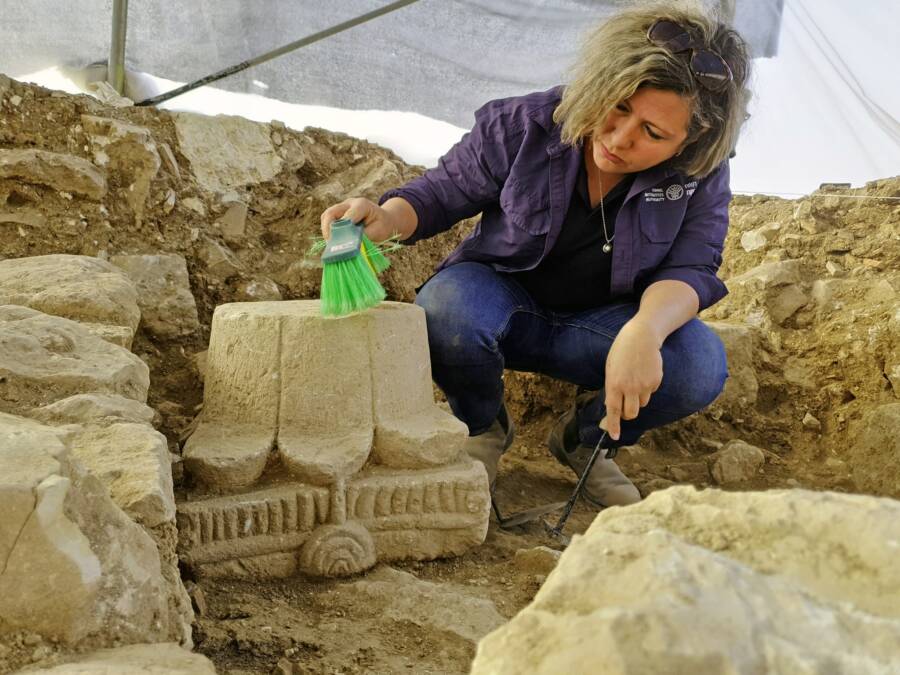
Israel Antiquities Authority/FacebookIAA excavation manager Anna Eirich cleaning off the stone capital that may depict a menorah.
“It seems this capital stood atop a column in a magnificent building or on a street, in a late Roman period settlement here (second-fourth century C.E.),” excavation managers Dr. Uzi Ad and Anna Eirich stated in the IAA Facebook post. “From its local context and finds this settlement was apparently populated by descendants of Roman army retirees. If so, what was a capital with a menorah decoration on it doing here of all places – a distinct Jewish symbol? This is a true conundrum.”
Now, researchers have some guesses about how and why this mysterious ancient capital was first created.
The Larger Mystery Behind This Ancient Pillar Capital
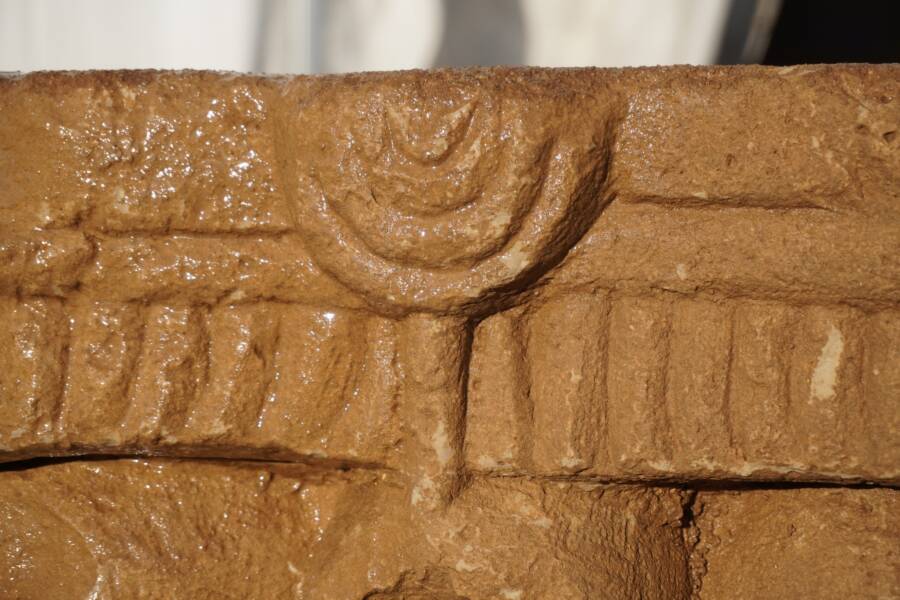
Israel Antiquities Authority/FacebookA close-up of the possible menorah detail on the ancient stone capital.
According to Dr. Orit Peleg-Barkat of the Hebrew University of Jerusalem, who specializes in ancient architectural decoration, this capital is a remarkable artifact that “exhibits truly distinctive features.”
“Most significantly, the upper section — traditionally adorned with a floral motif — instead features what resembles an eight-branched menorah,” she explained. “This is particularly intriguing because seven-branched menorahs typically appear on capitals from synagogues of the late Roman and Byzantine periods, such as those found at Capernaum and Caesarea.”
She continued: “The absence of any evidence suggesting a synagogue at this site raises questions about the capital’s original purpose and context. It’s possible the craftsman intended to carve a conventional flower design but, due to his limited familiarity with standard models, created something that bears a resemblance to a symmetrical eight-branched lamp.”
Meanwhile, another researcher suggested that the capital may have once belonged to a Jewish settlement, and that its destruction was linked to the Bar Kokhba revolt of Judean Jews against Roman forces in the second century C.E.
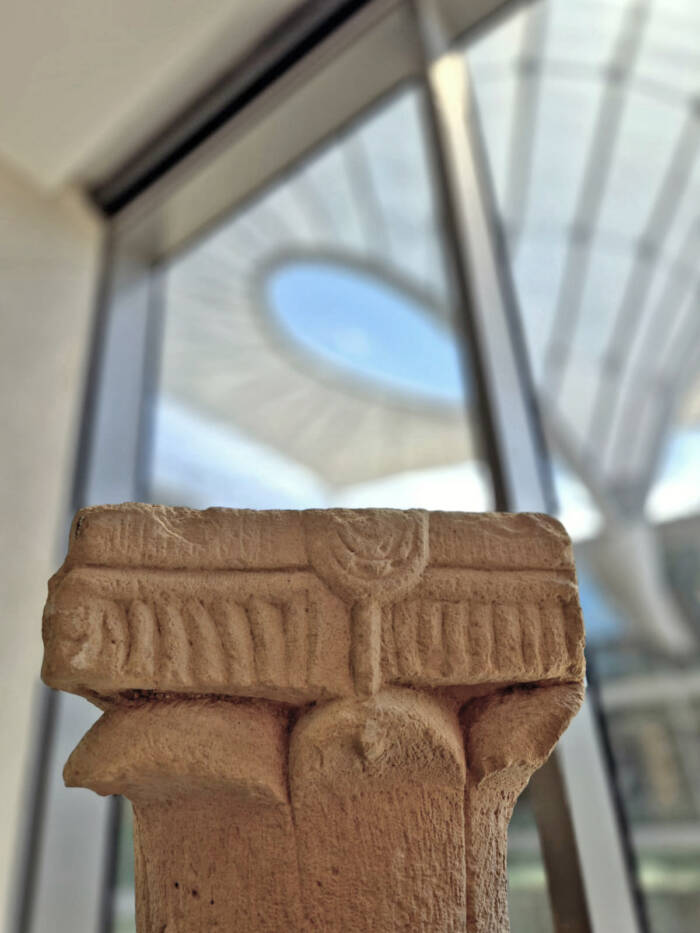
Israel Antiquities Authority/FacebookThis ancient stone capital is now on display at the Jay and Jeanie Schottenstein National Campus for the Archaeology of Israel in Jerusalem.
“Finding objects decorated with menorahs, certainly on heavy stone objects, is a clear indication of the existence of a Jewish settlement,” Dr. Yuval Baruch, Deputy Director of Archaeology at the Israel Antiquities Authority, stated.
“Now, let us consider that historical texts supported by archaeological research shows that the Jewish settlement in Judea – and especially in the Jerusalem hills, suffered a great blow as a result of the Bar Kokhba revolt in the 2nd century CE – in fact, it can be considered eliminated in this region. Based on this reality, it is reasonable to surmise that this capital was brought from a destroyed site elsewhere merely to serve as useful building material here, in secondary usage.”
Wherever this rare capital came from — and however its pillar was originally destroyed — archaeologists are thrilled at the discovery. They say that it is “a rare architectural artifact that has no archaeological parallels.”
